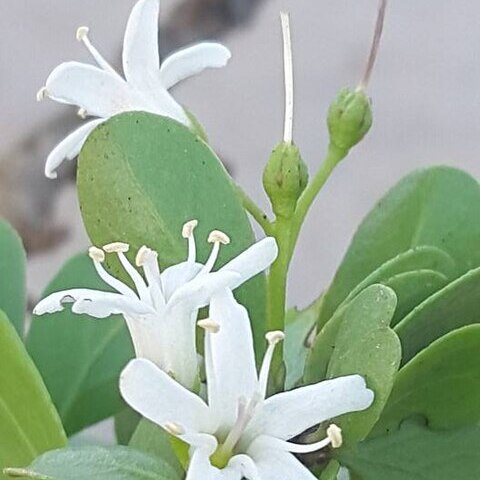Shrub, up to 4 m high. Stems rigid. Leaves petiolate; blade oblong to obovate, 6-25 x 3-13 mm, apex obtuse or acute, glabrous except for appressed setae along margin, thickening when older or under unfavourable climatic conditions. Flowers: in scorpioid cymes; peduncles and pedicels with multicellular hairs and scattered setae; calyx lobes narrowly triangular, up to 3 mm long, apices acute to acuminate; corolla tube and lobes ± 3 mm long, white fading to cream-coloured; Aug.-Oct. Fruit a drupe with 4 pyrenes; pyrenes subglobose, 3 x 4 mm.
A shrub. It grows 4 m high. It loses many leaves during the year. The branches are rigid and spread in all directions. The bark is smooth, dark grey and crumbly. The leaves are simple and usually clustered on short branches. The leaves are narrowly oval and 103 cm long by 1 cm wide. They taper to the base. The flowers are in single heads on short side branches. They are white or pink when older. The fruit is an orange berry. It is round and 4-6 mm across.

